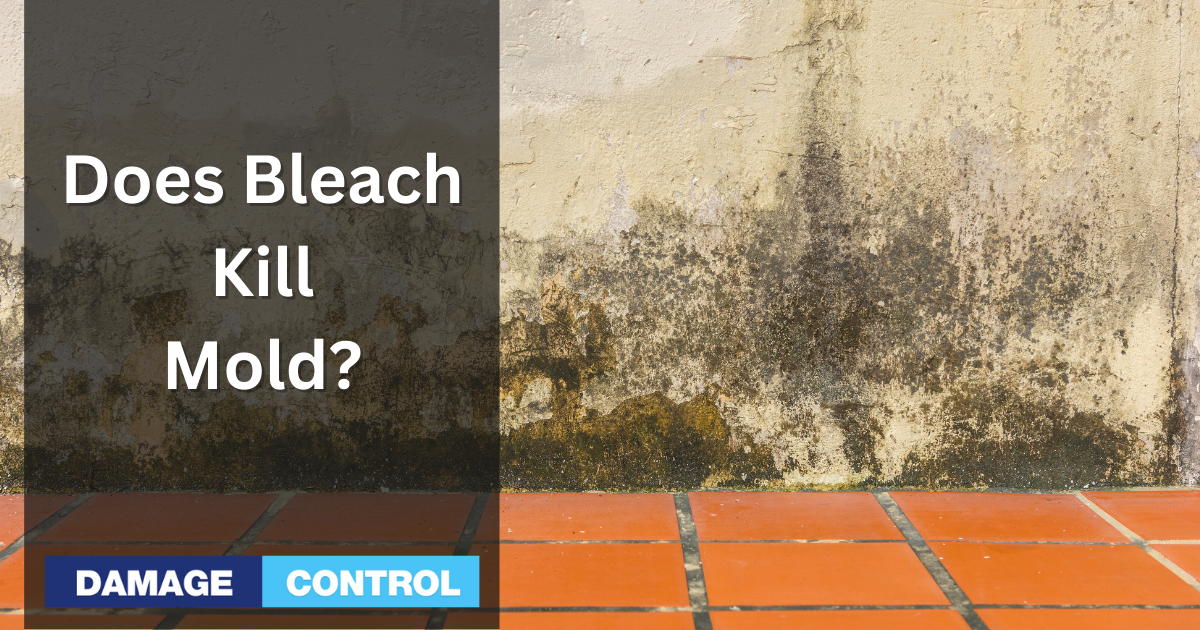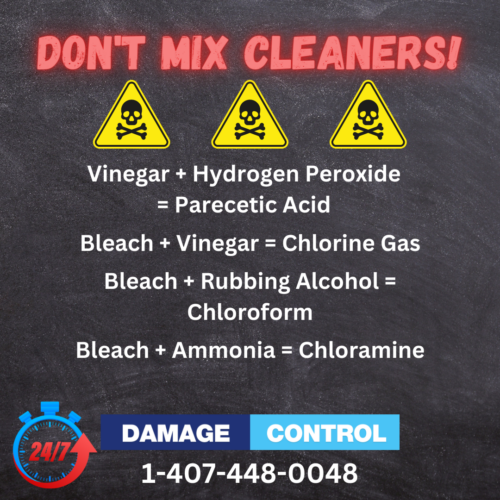When your home is afflicted with mildew or mold, you must act quickly to avoid a full-blown infestation. Getting rid of mold and mildew can be tricky if you are not using the right tools. You can use excessive heat, but it's not practical. Ammonia is effective, but only on nonporous surfaces, and it's dangerous. Plenty of different cleaners and highly effective professional-level products on the market can kill mold. Even something as simple as white vinegar can be effective. There is one solution that people always float: bleach.
Does bleach kill mold? Does it do more harm than good? What should you know before you use it to clean mold? Here, you will find all the answers to work with bleach to rid your home of mold.
Yes, bleach kills mold, BUT…
The first thing you must understand about bleach is that it is highly effective at killing mold. Bleach is a corrosive disinfectant, which means when it comes into contact with mold, it immediately breaks it down.
If you know what you are doing with it, then yes, using bleach does kill mold. Where things become tricky is in understanding that bleach is effective but not necessarily the best thing to kill mold with.
What is Bleach?
Bleach is a name applied to any chemical that removes color, stains, or cleans a surface. There is a misconception that bleach differs from brand to brand and type to type. However, not all bleaches are the same.
Household bleach primarily comprises a mixture of chemicals such as sodium hydroxide, hydrogen peroxide, calcium hypochlorite, and its main component, sodium hypochlorite.
Sodium Hypochlorite or NaOC1
Sodium hypochlorite has been used as a disinfectant since the 18th century. It is a yellow-green dilute solution that is typically diluted with water. When in solution, it is easily decomposed due to instability. When decomposition occurs, chlorine is released, turning the solution into a powerful cleaning agent. It is the oldest and still most widely used chlorine-based bleach in existence.
Other Types of Bleach
Over the centuries, different kinds of bleaches designed for different jobs began to enter the picture.
Chlorine Bleach
The most common chlorine bleach is liquid sodium hypochlorite. It is the same stuff that is used to keep pool water clean. It also has use in water purification and cleaning. It is often sold for home use and is typically diluted to 6%. However, that percentage lowers the longer the bleach goes unused as the solution breaks into a simple salt-water combination.
Oxygen Bleach
Oxygen bleach, sometimes known as color-safe bleach, is made of sodium percarbonate. It contains no chlorine. It can be used on cloth and tile without the damaging or toxic effects that regular bleach would have.
Should I Use Vinegar or Bleach to Kill Mold?
The EPA will most often recommend using vinegar to kill mold, particularly when working with a porous surface. Bleach is a corrosive chemical; when it gets into a porous surface, it can start weakening it. This is especially true for wooden surfaces, upholstery, or carpet.
Vinegar, on the other hand, is less corrosive and has a longer working time. Exploring natural cleaning agents is a plus for many reasons. If you can avoid harsh chemicals in the home, you're better off with the natural path. It is also more likely to make its way into the porous material and kill the mold from the inside. Using bleach on a porous surface will only kill the mold on the surface, meaning there is a strong chance that the mold will simply return later.
Bleach can be effective in cleaning mold if the surface is non-porous. If the mold is strictly at the surface, then bleach will eradicate it. You must thoroughly clean the surface and wipe away all traces and residue of the mold. You must be certain to wipe away all of the mold and properly dispose of it, lest you run the risk of it growing back and causing respiratory illnesses such as asthma or allergies.
How to Dilute Bleach
To dilute bleach into a cleaning agent against mold, mix one cup of bleach (the kind used for laundry is fine) and one gallon of water.
How to Clean Mold With Bleach
Prep the Area
If you have concluded that you must use bleach to clean mold, then you must do it right. You need to prep the area that you are going to clean. The room must be properly ventilated. It is a good idea to have a fan to circulate the air. This will prevent the odor of the bleach from becoming overwhelming.
Proper Gear
You want to wear the proper safety gear when using bleach. Rubber gloves and safety glasses are a must. Prolonged exposure to bleach is harmful, so if you want to be safe, wear long-sleeved clothes in case of spills.
Soak and Wipe
To clean a nonporous surface, spray bleach on the mold on the afflicted area. Let the bleach sit on the mold for fifteen minutes. This gives the bleach enough time to eat away at the mold and break it down. You can then wipe down the surface. Make sure that with each wipe, you are lifting any residual mold.
Thoroughly Dry the Surface
Leaving even the slightest amount of mold behind means that the mold will be able to grow back later. You want to be sure that you thoroughly dry the surface after wiping away the mold. Use a towel and rub down the surface. Run a fan on the surface if need be. If you do not do this, you will practically guarantee the return of the mold.
There must be no moisture on the surface. Use a moisture meter to determine how dry or moist it is. You may need to repeat the process if you exceed 15% in moisture. A moisture meter is relatively inexpensive, and having one around can help prevent mold growth in the future. We have a decent intro to moisture monitoring devices if you need more information on this tool, covering how it works, the types available, and how to use them correctly.
What You Should Never Mix with Bleach
Bleach is a chemical that requires the utmost care when you use it. The golden rule when using bleach is never to mix it with anything but water. Bleach is too reactive with other chemicals. You are more likely to make yourself sick, or worse if you mix it with other additives. Here are three things to never mix with bleach.
- Ammonia – Numerous household cleaners contain ammonia. Ammonia mixed with bleach creates a toxic gas called chloramine, which can cause nausea, coughing, wheezing, watery eyes, chest pain, and even pneumonia.
- Vinegar or other gasses – Mixing bleach with vinegar will create a chlorine gas, which is corrosive and toxic.
- Alcohol – Bleach, when mixed with alcohol, creates chloroform.
What happens if you don't dilute bleach?
If you use full-strength bleach without diluting it with water, you can seriously harm what you attempt to clean with it. Bleach can strip a surface of its color, particularly cloth and carpet. This can lead to a splotchy appearance. Not only can undiluted bleach damage what you clean, but it is also a major skin irritant if you come into direct contact with it.
You must act quickly if you come into direct contact with undiluted bleach. You need to begin rinsing the bleach off of your skin with water. Do this for several minutes. Make sure to dry off with an absorbent cloth. Be sure to remove any clothing or jewelry that may have also come into contact with the bleach. If you experience a bleach burn, you must see a doctor quickly.


